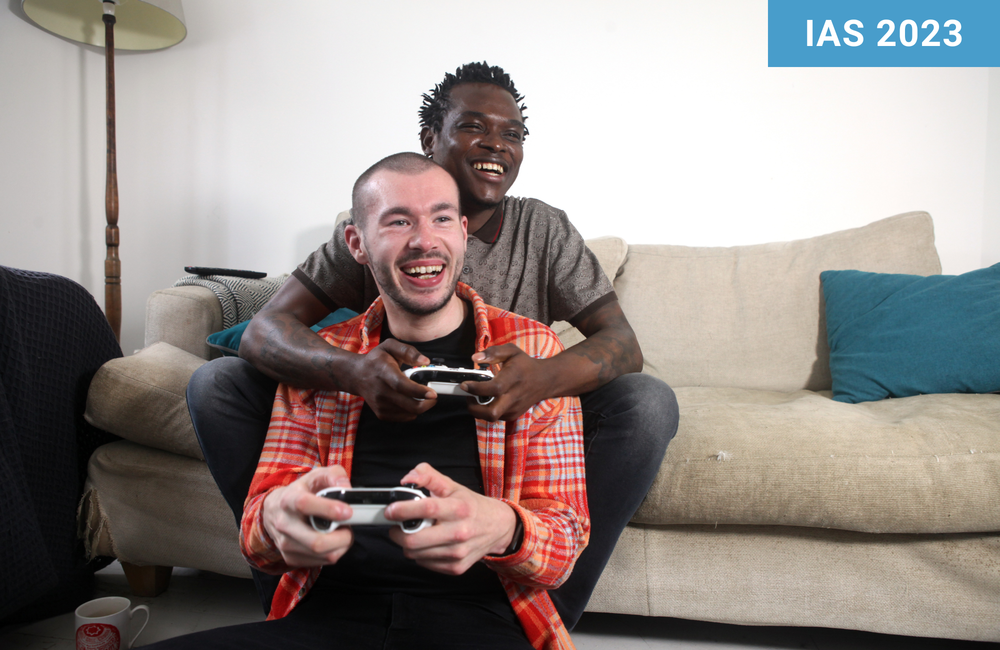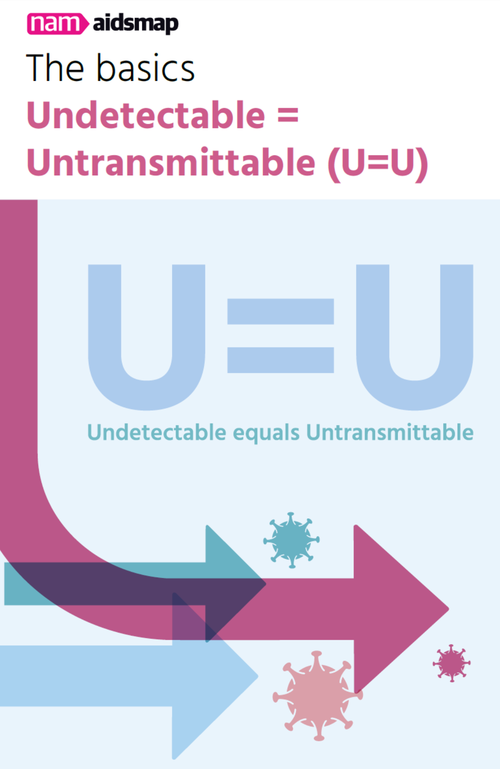
In the Undetectable = Untransmittable (U=U) era, undetectability is experienced in varied ways by people living with HIV. This includes as a way of gaining control over HIV, evidence that treatment is working, a sign of improved health and as a means of reducing anxiety over sexual transmission.
Beyond this, the biomedical marker of viral load becomes associated with the identities of many people living with HIV, according to qualitative research by Dr Nathanael Wells of the Kirby Institute at the University of New South Wales published in Sexual Health. Additional details of the study were included in a poster presented at the recent 12th International AIDS Society Conference on HIV Science (IAS 2023) in Brisbane.
U=U is a message that summarises a body of scientific research indicating that people living with an undetectable viral load (defined as below 200 copies) cannot transmit the virus to sexual partners.
The study
The participants are from a qualitative cohort study of people living with HIV, diagnosed since 2016. The 35 participants included 33 men, 22 of whom were gay, seven bisexual and four were straight. Both women interviewed were straight. Most participants were born in Australia or New Zealand (23), with approximately equal numbers being diagnosed in 2016, 2017, 2018 and 2019 and fewer in recent years.
Interviews have been conducted since 2019, with some participants being interviewed more than once.
Experiences of undetectability
Australia has universal health care and thus, participants are easily able to access antiretroviral therapy (ART) to manage their HIV. Nearly all the participants had started treatment immediately or very soon after diagnosis and were able to reach and maintain an undetectable viral load within three to six months.
While this was viewed as a straightforward, predictable process in a country with universal health care, some participants still described reaching undetectability as an ‘achievement’. This created a sense of distinct periods: starting from a place of a detectable viral load and then later reaching undetectability, with accompanying differences in the words used to describe each state. One participant described transitioning from detectable to undetectable in these words:
“[I] felt dangerous, dirty. I felt in the process of becoming healthy, but not healthy… and I certainly felt alienated although I was also reassured that I would reach that point [of undetectable].”
This was also the case with viral load ‘blips’ (a brief period of low, detectable viral load) and during periods without medication. Undetectability was viewed as the ultimate destination to reach, one that would signify safety, health and ‘normality’:
“There was one period for three weeks that I stopped taking meds… I was coming down, detoxing, whatever… And I felt like shit. And the moment I started treatment… and my viral load dropped back down, I don’t know whether it was psychological or not but, yep, I felt better.”
“[Undetectability is] my security blanket. Just having that – an undetectable viral load – makes you feel normal and validated.”
For some participants, undetectability was also experienced physically – through increases in energy, confidence and sex drive. While an undetectable viral load certainly has health benefits, this tended to be described as the physical effects of becoming aware of having an undetectable status, as opposed to strictly physiological changes. One participant expressed it in this manner:
“Very soon after I found out I was undetectable, my sex drive came back… It was kind of weird how much of that just felt like a light switch… It wasn’t necessarily up here [head]. It was very much, like a physical thing.”
Experiences of being untransmittable
While part of the participants’ narratives centred around getting control over the virus, much of the stigma-reducing power of U=U came from the second 'U': the fact that they could no longer transmit HIV to sexual partners.
This was described not only in sexual terms, but also as a way of actively rejecting stigma and asserting resilience more generally. One of the female participants had this to say to her brother:
“‘After what you’ve said to me and after all the things you’ve said’… I was able to turn around and go, ‘Well hang on a minute. I might be positive but there’s also this that you don’t understand. I can’t give [HIV] to anybody… I don’t understand what your problem is.’”
The inability to transmit HIV meant that participants no longer had to feel ashamed about having it in the first place. This was strongly expressed as a desire not to transmit HIV to anyone else, and the fact that U=U meant that this was no longer a concern:
“If I’d infected someone else, I would have been suicidally depressed… I would feel so awful if my negligence put someone else through what I went through.”
“Like I have a weird superpower. That is, the superpower not to ever give anyone HIV. But it’s also the weird superpower in my own head: now, I’m free of all those cultural things that were put in my head about what I should and shouldn’t do.”
While this ‘superpower’ is dependent on taking a pill every day and remaining undetectable, it is a price that participants were willing to pay to maintain a sense of self, free from much of the guilt that would accompany transmission.
These descriptions show how undetectability is inextricably linked with having HIV currently. While the link between viral load and sex is emphasised, the participants tended to focus on the impossibility of transmission and the sense of liberation this represented. In the U=U era, this also points to both how HIV is experienced and how identity is formed around notions of undetectability and untransmissibility.
Limits of undetectability
While most participants felt strongly about the importance of reaching undetectable, and its attendant benefits, one participant also expressed that he was not cured of HIV, but had to negotiate living with it, despite being undetectable:
“I [thought] in my mind being undetectable meant my life could be back to normal… [but] it didn’t make any difference really. I wasn’t feeling anything different… From that point on I was just [thinking to] myself: ‘Now this is the hard part. When can I go back to dating? Can I go back to dating? Can I go back to having casual hook-ups? Am I going to tell anyone?’”
This quote raises the laden issue of disclosure despite undetectability, which can be the ‘hard part’ in places where people living with HIV are required to tell their sexual partners by law, regardless of U=U. Even where there is no legal imperative, there may a be a perceived moral one that many people living with HIV continue to grapple with.
Another participant highlighted the ongoing health struggles that may persist and be overshadowed, despite undetectability:
“You’re hearing this all the time, you know, undetectable, undetectable, undetectable! But you’re not hearing about the longer battle with your immune system recovery so much.”
Conclusion
Biomedical markers such as an undetectable viral load have been incorporated as a new sense of self for many people living with HIV, and this has impacted how they experience living with their diagnosis. The process spanning diagnosis, starting treatment, becoming undetectable and realising the benefits of U=U is described as becoming ‘undetectabilised’ by the researchers – indicating that it becomes a central aspect of identity for many people.
This has the potential to improve the physical, psychological, and sexual health of people living with HIV but remains dependent upon taking a daily pill, and at times, may obscure some of the challenges experienced by people living with HIV, especially during periods of detectability.
Wells N et al. ‘It’s like I have this weird superpower’: experiences of detectable and undetectable viral load among a cohort of recently diagnosed people living with HIV. Sexual Health, online ahead of print, 6 June 2023.
https://doi.org/10.1071/SH23044
Murphy D et al. The undetectabilised body: Embodiment of undetectable viral load (UVL) results among people recently diagnosed with HIV. 12th IAS Conference on HIV Science, Brisbane, poster EPD0538, 2023.

